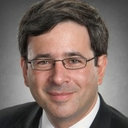Minimally invasive endoscopic endonasal management of skull base cholesterol granulomas.
Mots clés
Abstrait
BACKGROUND
Skull base cholesterol granulomas (SBCGs) are rare lesions that have traditionally been managed via middle fossa or transtemporal approaches. Despite the relative paucity in the literature, the endoscopic endonasal approach may serve as a potential alternative surgical route. In this study, we report our experience with the management of SBCG using this minimally invasive approach.
METHODS
The charts and imaging studies of three patients were reviewed retrospectively. The mean age was 36 years (range 30-42). The male/female ratio was 2:1. The epicenter of the lesion was petrous apex in two patients and clivus in one. One patient had undergone surgery via a middle fossa approach 3 years before the endoscopic procedure. The SBCG was drained using an endoscopic endonasal approach in all patients. A stent was left in place in 2 cases.
RESULTS
All patients presented with headaches and ipsilateral retroorbital pain. One patient also had diplopia, ipsilateral blepharospasm, and hearing loss. Average lesion size was 31 mm (22-37 mm). Pain and associated neurologic symptoms completely resolved in one patient, and the headache significantly improved in the other two. These two patients underwent revision surgeries for symptomatic reaccumulation and stenosis of cavity opening at 5 and 7 months, respectively. Both patients improved subsequently, and have been stable since that time. One patient developed chronic sphenoid sinusitis. Average hospital stay was 1 day per procedure. All patients had functional patency of the SBCG with average follow-up of 25 months (10-36 months).
CONCLUSIONS
Endoscopic endonasal approach may serve as a technically feasible and minimally invasive alternative to traditional surgical approaches for the management of SBCG in carefully selected patients.


